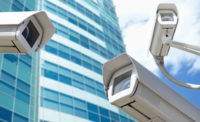The Right Technology for the Job

As technology moves forward at seemingly break-neck speed — and as bad actors invent new ways to attempt to thwart it — companies are showing an increased willingness to invest in more solutions for both physical and cybersecurity needs. But as with anything else, not all solutions are created equal, so it is important to choose wisely, and for the right reasons.
On the physical front, AI and cloud based solutions are driving a lot of decisions today.
For example, a study conducted by Harris found that 70 percent of security professionals believe their organization plans to increase spending on physical security systems in 2025. More than 90 percent thing the future of physical security will be cloud-based, with three quarters looking to transition to the cloud in the next year.
The report, commissioned by Verkada, surveyed more than 1,500 IT and physical security leaders to gather insights on the state of cloud physical security. It also looked at attitudes on the cyber front and AI, finding that 90 percent of professionals surveyed think that cloud security is now more effective at protecting against data leaks and unauthorized access; while 80 percent think AI-based analytics will play a large role in future physical security solutions.
Another report, from HID, also looked at the state of physical security, particularly access control. Specific to smart buildings, the report found that open standards have become a key driver, allowing for more converged solutions that can help organizations make not only security but also business decisions — with nearly a third saying integration with other business functions a top trend.
When asked about AI, just 23 percent had no plans to incorporate some form of the technology.
On the cyber side, there is also recent evidence that budgets are expanding.
A report by Optiv found that cyber budgets have increased by almost 60 percent year-over-year. But the details are a big more nuanced. While organizations with more than 5,000 employees spent an average of $26 million on cybersecurity investments in 2024, just 36 percent cited a “formal” approach to establishing those budgets, and many were a possible direct result of a rise in incidents rather than a proactive one.
More than 60 percent cited experiencing a cybersecurity event within the past two years, and 55 percent had experienced at least four incidents.
The report also suggested that simply throwing technology at the problem may not be as effective, with 40 percent of respondents saying their organization had “too many” technologies, leading to a decrease in effectiveness overall.
However, another study from Titania shows that some organizations are thinking more proactively, with 70 percent saying they are increasing spending on proactive cybersecurity solutions such as attack surface and risk-based vulnerability management. According to the study these investments are outpacing those in preventative and reactive solutions.
This research also highlighted the importance of consolidating proactive security tools such as attack surface visibility and management, increased security control optimization and better manpower productivity.
Looking for a reprint of this article?
From high-res PDFs to custom plaques, order your copy today!








